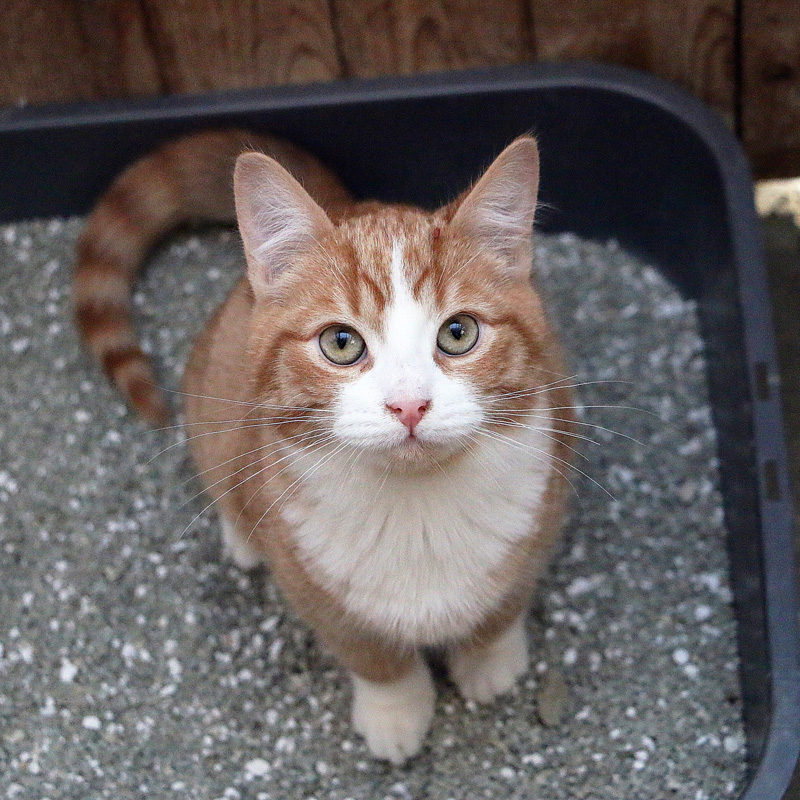
Fixing Programs and Cats with Jonathan Howe, Public Defender and New York’s 14th Congressional District Candidate
March 22, 2022
Discussing Feline Behavior with the CCP Behavior Day Dream Team
March 29, 2022
By: Tabitha Kucera RVT, CCBC, KPA-CTP, Owner of Chirrups & Chatter
Like what you’re reading? Hear her speak! Join us for Tabitha’s session during Online Behavior Day on April 9. Learn more and register here.
Cats going to the bathroom outside of their litter boxes is a common complaint among owners. Contrary to popular opinion, cats do not do this to punish or spite their housemates. Instead, house-soiling is often due to a medical problem or fear, anxiety, and stress.
In many cases, a cat’s litter box is not set up properly, which can lead to them not using it. One litter box does not fit all as there are preferences for cats. There are four basic things to consider when setting up a litter box to help prevent accidents and create positive associations with their box. Here, learn how to ensure you have the best home environment possible for your cat’s needs.
Choosing a Litter Box
Size does matter when it comes to litter boxes-bigger is always better. Even the so-called “large” litter boxes sold in pet supply stores are too small for most cats. When choosing a box, your cat should be able to comfortably turn around in the box and, ideally, the box should be at least 1.5 times the length of the cat from nose to the base of the tail. Under the bed storage containers, 30-gallon storage containers, and cement mixing tubs are a few appropriately sized alternatives to their small commercial counterparts.
When choosing boxes for small kittens, declawed, or senior cats, it’s recommended to use low-sided boxes, or purchasing a storage container and cutting a low entry so that the cat can easily walk in and avoid lifting their legs high or jumping in, which can be painful.
 The majority of cats are not fond of covered boxes for a variety of reasons. These boxes are often too small, and they trap odors and dust inside, which is very unpleasant for the cats. Cats are both prey and predator animals. Due to them being prey animals, asking them to go in a covered box where, from a cat’s perspective, they cannot see possible predators and are made to feel exposed to threats is not ideal. A clear litter box can be helpful to make cats feel safer.
The majority of cats are not fond of covered boxes for a variety of reasons. These boxes are often too small, and they trap odors and dust inside, which is very unpleasant for the cats. Cats are both prey and predator animals. Due to them being prey animals, asking them to go in a covered box where, from a cat’s perspective, they cannot see possible predators and are made to feel exposed to threats is not ideal. A clear litter box can be helpful to make cats feel safer.
Based on research, cats prefer soft, unscented, and clumping litters. Cats have a strong sense of smell (about 14 times stronger than humans), which is why scented litter can be very unpleasant to most cats.
This is also a good reason to avoid using litter deodorizers or air fresheners near the litter box. Odor should not be a problem if you are keeping the litter box clean. Cats also have a natural instinct to bury their waste in order to avoid attracting predators and will look for a soft, loose substrate that’s easy to dig into. It’s recommended to stick with what cats prefer and if your cat prefers a specific litter, try not to change it.
Where to Place the Litter Box (and How Many to Purchase)
The golden rule for the number of litter boxes in a house is one box per cat plus one. Remember, three boxes right next to each other are considered one box from a cat’s perspective. Location of litter boxes is key in preventing litter box aversions and accidents. Do not place litter boxes in the same area as your cat’s food and water. You would not want to eat where you use the restroom and neither does your cat.
Cats prefer to use their boxes in quiet and private places. When placing litter boxes, avoid high traffic areas and locations where a cat could be cornered or unable to flee (for example, if the box is in a closet where another cat or dog can block the exit). Frequently, people place litter boxes in the laundry room, but these areas are not ideal. Washers, dryers, and furnaces are all loud appliances that turn on randomly-if a furnace kicks on when the cat is in a box, this can scare them and cause them to associate the litter box with a negative situation. Ideally, to prevent issues and encourage cats to use litter boxes, there should be a box on each floor. It’s recommended that you avoid placing the boxes in busy areas or where a cat could be trapped by another cat, a dog, or other people in the house.
If your cat begins to not use the box, reach out to your veterinarian to address medical issues and certified behavior professionals for help.




